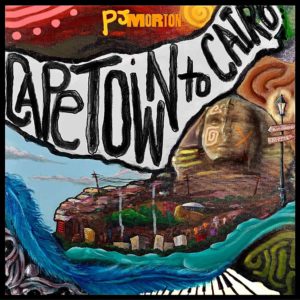The musical brotherhood and sisterhood that exists between the African continent and New Orleans is instantly recognized on “Smoke and Mirrors,” the exciting opening cut from PJ Morton on Capetown to Cairo. Initially recorded in Nigeria, acoustic African drums get this tune started and then Morton’s keyboards and a New Orleans horn section jumps in, and things get funky big-time, Crescent City-style.
The album was created during Morton’s 30-day sojourn across Africa that included stops in Nigeria, South Africa, Ghana and Egypt. Positive vibrations reign as heard on the reggae-tinged “Count on Me,” on which Morton shares vocals with Capetown’s Fireboy DML. Throughout the African diaspora, musicians embrace each other’s sense of strong rhythms and the need to deliver socially-conscious messages as heard on another Jamaican flavored cut “Who You Are” that includes the trumpet, sax and vocals of Nigeria’s Mádé Kuti (son of Nigerian afrobeat musician, Femi Kuti), that are enhanced by some strong keyboard work by Morton.
Morton, who composed and or collaborated on all of the tracks, brings it home on the romantic ballad, “I Found You,” that includes a string section arranged by New Orleans’ own Mike Esnault. It’s signature Morton as he sits at an acoustic piano and emotionally delivers his words of love.
The other local artists heard throughout the release include trumpeter John Michael Bradford, who also arranged the horns, and saxophonists Amari Ansari and Zahria Sims. Shout out to bassist Brian Cockerham, a regular with Morton, for digging deep into the low-down personality of his instrument.
On “Simunye (We Are One)” Morton, who, of course grew up in the church, leads South Africa’s Soweto Spiritual Singers. It’s just a beautifully natural blending as one experiences the rich African roots that remain in Black gospel music today.
Capetown to Cairo, which some might compare to Paul Simon’s masterpiece album Graceland, celebrates with great joyfulness, sincerity and yes, fun—the living musical legacy of the African diaspora of which New Orleans is very much a part.
PJ Morton




